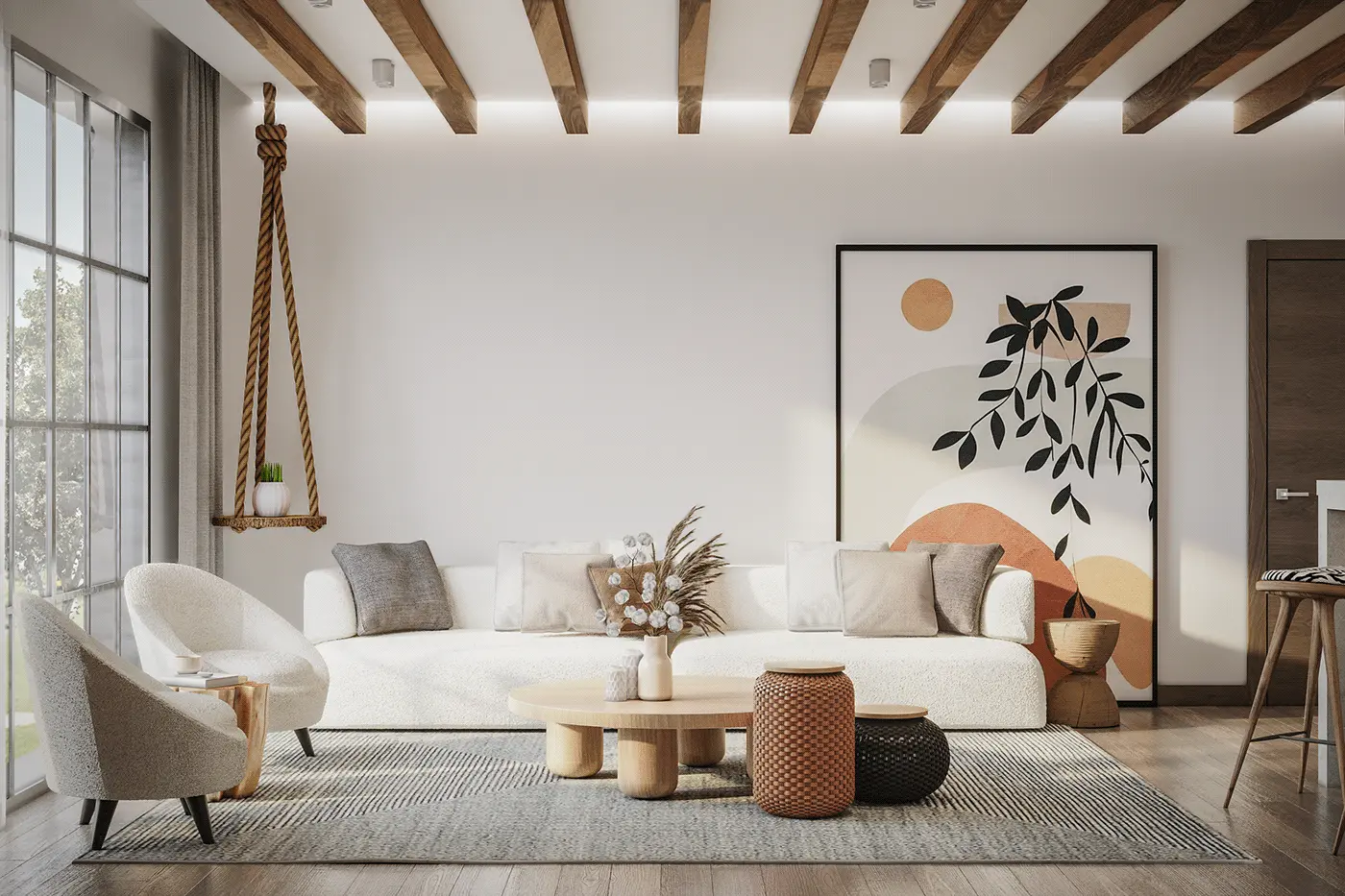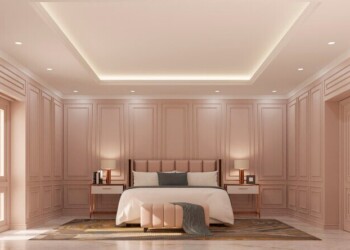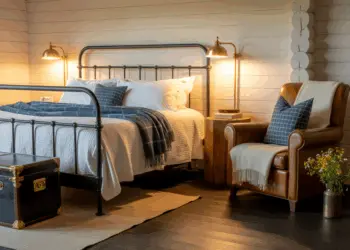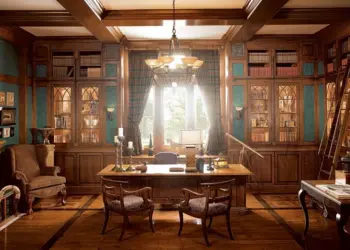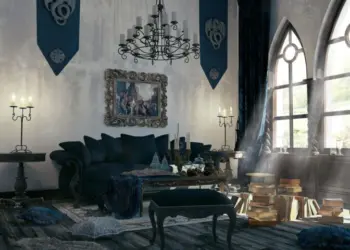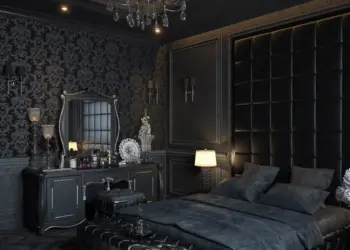In the fast-paced world we live in, the allure of Wabi Sabi interior design has taken center stage. This ancient Japanese philosophy celebrates imperfections, simplicity, and the beauty of natural materials. If you’re looking to infuse your living spaces with a sense of tranquility and authenticity, this Wabi Sabi Interior Design Guide is all you need.
Understanding Design Wabi Sabi
What is Wabi Sabi?
Wabi Sabi is more than a design style; it’s a way of life. Rooted in Zen Buddhism, Wabi Sabi embraces imperfections, transience, and the inherent beauty of aging. It finds perfection in the imperfect, celebrating the authenticity of materials and the passage of time.
Core Principles: Discovering the Soul of Wabi Sabi
Unveil the fundamental principles guiding Wabi Sabi design:
- Embracing Imperfections: Wabi Sabi celebrates the beauty found in imperfections, valuing asymmetry and the natural aging process of materials.
- Simplicity (Kanso): Core to Wabi Sabi is the principle of simplicity, where the focus is on removing the unnecessary, leaving only what is essential.
- Natural Materials (Shizen): Wabi Sabi design emphasizes the use of natural materials, such as wood, stone, and clay, connecting the interior space with the natural world.
- Minimalism with Purpose: Beyond aesthetics, Wabi Sabi minimalism is a deliberate choice to simplify and focus on what truly matters, fostering a sense of calm and mindfulness.
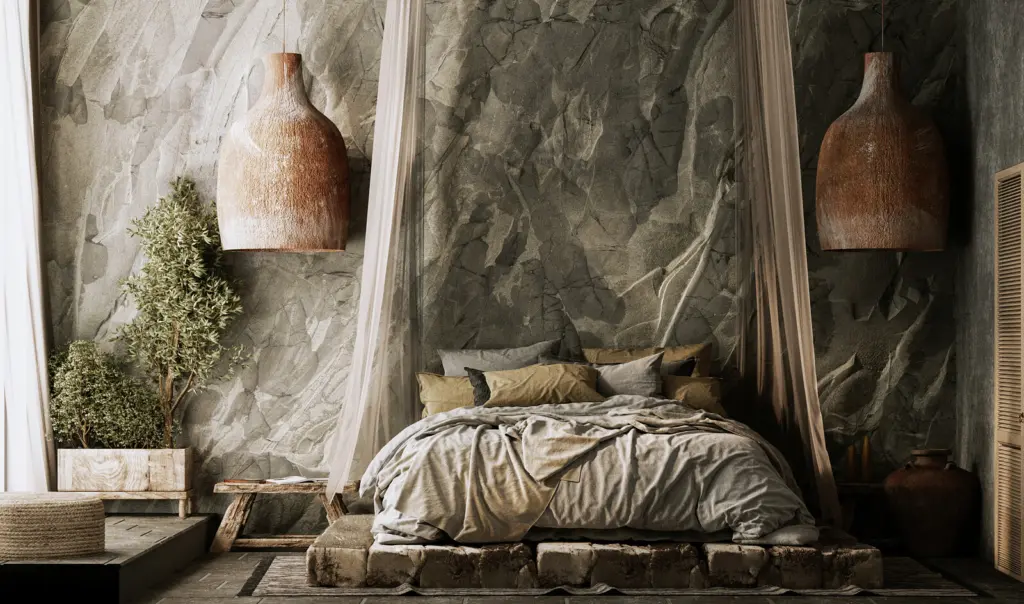
Elements of Wabi Sabi Interior Design
Imperfect Beauty
Wabi Sabi, deeply rooted in Japanese philosophy, transforms imperfections into art within interior design. Embracing the beauty of cracked ceramics and weathered wood, Wabi Sabi interiors celebrate the authenticity of these flaws.
- Cracked Ceramics:
- Wabi Sabi sees cracks not as defects but as a testament to an object’s journey.
- These imperfections are valued for telling a story and adding a sense of history to the living space.
- Weathered Wood:
- The Japanese aesthetic finds beauty in the natural aging of wood, appreciating the changes over time.
- Weathered wood brings a rustic charm, adding character and warmth to the surroundings.
- Adding Character and Depth:
- Imperfections in materials create a unique, lived-in feel, fostering a connection between the inhabitant and their environment.
- These flaws add a layer of depth to the interior, making it more interesting and visually engaging.
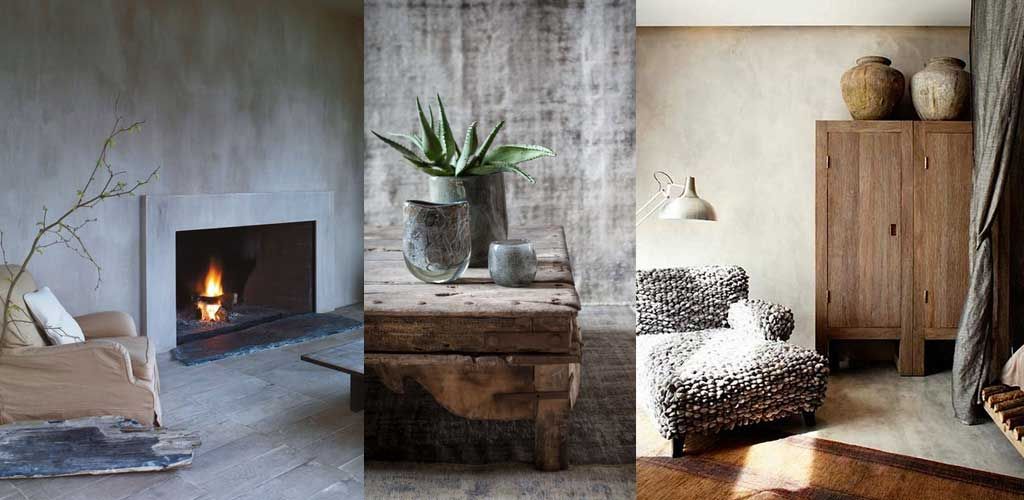
Natural Materials :Bringing the Outdoors In
Wabi Sabi design draws inspiration from nature By integrating these natural materials, Wabi Sabi design brings the essence of the outdoors inside, fostering a sense of grounding and tranquility, emphasizing the use of natural materials to create a harmonious living environment:
- Wood:
- Connection to Nature: Incorporating wooden elements brings the warmth and texture of nature indoors.
- Imperfections Celebrated: Natural wood with knots, grains, and variations is celebrated for its imperfections, adding character to the space.
- Stone:
- Solidity and Stability: The use of stone in Wabi Sabi design symbolizes stability and durability, creating a sense of grounding.
- Worn Surfaces: Worn and weathered stone surfaces are embraced, showcasing the passage of time and the beauty in impermanence.
- Clay:
- Handcrafted Aesthetics: Handcrafted clay items embody the Wabi Sabi spirit, celebrating the human touch and irregularities.
- Earthy Aromas: Clay elements may also contribute to the sensory experience, emitting earthy aromas that further connect the living space to nature.
Minimalism with Purpose: Simplicity Beyond Aesthetics
Wabi Sabi minimalism transcends the mere act of decluttering; it embodies a profound philosophy that embraces imperfection and impermanence. Rooted in Japanese aesthetics, Wabi Sabi minimalism is characterized by:
- Imperfection Celebrated:
- Flawed Beauty: Rather than seeking flawlessness, Wabi Sabi finds beauty in the imperfect, be it in the simplicity of a cracked ceramic or the weathered patina of wood.
- Worn and Weathered: A deliberate choice to celebrate the natural aging process, as seen in worn materials and surfaces.
- Simplicity with Purpose:
- Mindful Choices: Wabi Sabi minimalism encourages intentional and mindful decisions, focusing on what truly matters to the individual.
- Essentialism: It goes beyond mere simplicity to essentialism, where each element serves a purpose, fostering a sense of calm and clarity.
Incorporating Wabi Sabi in Your Home
Use Earthy Tones and Soft Hues
The Wabi Sabi color palette draws inspiration from the subtle and understated hues found in the natural world. Emphasizing muted earthy tones and soft pastels, this palette creates a harmonious and calming atmosphere, fostering a deep connection to nature. Here’s how these colors contribute to the Wabi Sabi aesthetic:
- Muted Earthy Tones:
- Inspired by Nature: Wabi Sabi embraces colors reminiscent of the earth, including soft browns, muted greens, and warm grays.
- Connection to the Earth: These tones evoke the essence of nature, promoting a grounded and authentic atmosphere within living spaces.
- Soft Pastels:
- Subdued Elegance: Incorporating soft pastels like faded blues and muted greens adds a touch of elegance without overpowering the senses.
- Gentle and Calming: These colors create a gentle and calming environment, fostering a sense of tranquility and mindfulness.
Furniture and Decor
Discover the art of selecting furniture and decor that marries functionality with simplicity. From rustic wooden tables to handcrafted textiles, each piece should tell a story and contribute to the overall narrative of your space.Here’s a guide to curate a harmonious and meaningful environment:
- Simplicity and Functionality:
- Opt for furniture that serves a purpose without unnecessary embellishments.
- Prioritize clean lines and uncluttered designs, reflecting the simplicity inherent in Wabi Sabi.
- Rustic Wooden Tables:
- Choose tables crafted from rustic, weathered wood, showcasing the natural imperfections.
- The tactile qualities of wood add warmth and authenticity to the space.
- Handcrafted Textiles:
- Integrate handwoven textiles, such as cushions, throws, and rugs, into your decor.
- These pieces not only bring in a touch of craftsmanship but also introduce texture and coziness.
- Storytelling Pieces:
- Select items with a history or personal significance, adding depth to the narrative.
- Antique or repurposed furniture can carry a sense of time and embody the Wabi Sabi spirit.
- Harmony in Imperfection:
- Embrace imperfections in furniture, celebrating the beauty of wear and tear.
- Each scratch or mark contributes to the unique character of the piece and aligns with Wabi Sabi principles.
Incorporate Soft and Subdued Illumination
Understand the importance of soft, diffused lighting in Wabi Sabi interiors. Create a calming atmosphere with carefully chosen lighting fixtures that cast a warm and gentle glow.
- Soft Ambiance:
- Soft, diffused lighting softens the edges of a space, creating a gentle and inviting environment.
- Warm Glow:
- Carefully chosen lighting fixtures, such as paper lanterns or linen lampshades, emit a warm and soothing glow.
- The warmth of the light contributes to the overall sense of comfort and tranquility.
- Natural Interplay:
- Basket chandeliers, for instance, exemplify Wabi Sabi in lighting by casting a soft, diffused light that mimics the natural interplay of light and shadows.
- Calming Atmosphere:
- The intentional use of soft lighting contributes to the creation of a calming atmosphere, aligning with the Wabi Sabi emphasis on mindfulness and tranquility.
DIY Wabi Sabi Projects
Create Handmade Textures
Embark on simple, hands-on projects to infuse Wabi Sabi into your home. From hand-painted pottery to homemade textiles, discover the joy of creating imperfectly perfect pieces.
Repurposing and Upcycling : Breathing New Life into Old Objects
🌿 Embracing Mottainai in Wabi Sabi Design
- Mindful Repurposing:
- Approach everyday objects with a mindset of repurposing rather than discarding.
- Wabi Sabi Pots:
- Innovative upcycling inspirations, such as Wabi Sabi pots repurposed from vintage incense burners, showcase ornate plant containers.
- Kintsugi Craft:
- In the spirit of Kintsugi, repair broken objects with gold lacquer, turning flaws into features and embracing imperfections.
- Sustainable Living:
- Practice a sustainable lifestyle by minimizing waste and adopting a circular approach to design.
- Upcycling Projects:
- Engage in upcycling projects, exploring brilliant ideas to breathe new life into existing items.
🔄 Repurposing for Wabi Sabi Charm
Mottainai encourages a creative and respectful approach to objects, ensuring that every item serves a purpose and contributes to the narrative of a Wabi Sabi space. By reimagining the potential of everyday items, you not only reduce waste but also infuse your living space with a unique and meaningful aesthetic.
Living Wabi Sabi Daily
Try Mindfulness Practices: Cultivating a Wabi Sabi Lifestyle
Explore mindfulness practices inspired by Wabi Sabi. From mindful breathing to appreciating the beauty in the ordinary, discover how to bring the essence of Wabi Sabi into your daily life.
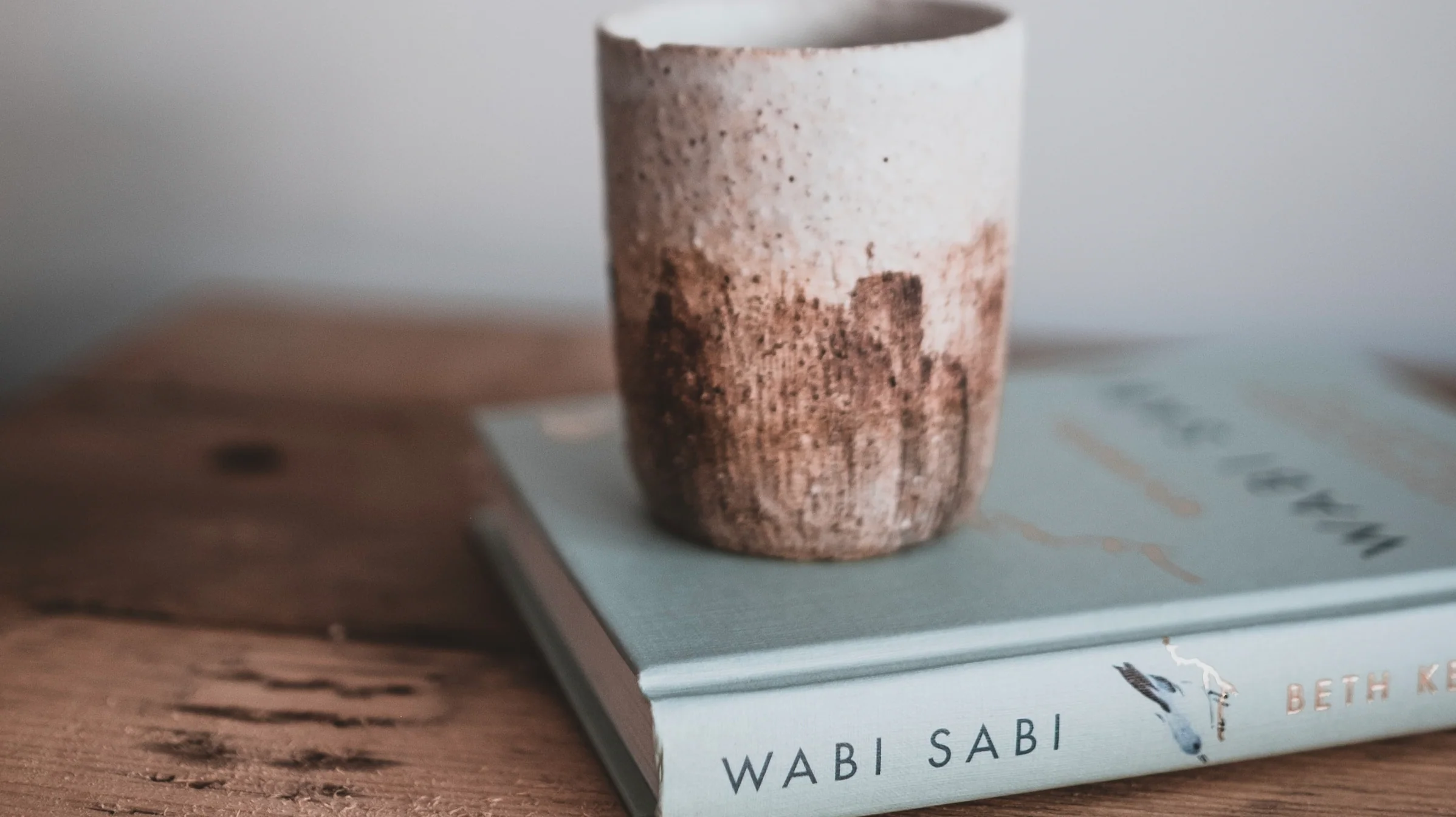
Seasonal Changes: Embracing the Beauty of Impermanence
Wabi Sabi beckons individuals to appreciate the ephemeral beauty of seasonal changes and recognize the impermanence of life. Here’s how you can skillfully adapt your living space to harmonize with the ever-changing rhythm of nature:
Embrace the Seasons:
- Natural Elements: Infuse your space with natural elements that evolve with the seasons, such as fresh flowers in spring and warm textiles in winter decor.
- Seasonal Decor: Rotate decor items based on the seasons, incorporating elements like leaves, shells, or branches to connect with nature’s cycles.
- Adaptable Color Palette: Opt for an adaptable color palette inspired by seasonal hues, creating a dynamic and ever-changing ambiance.
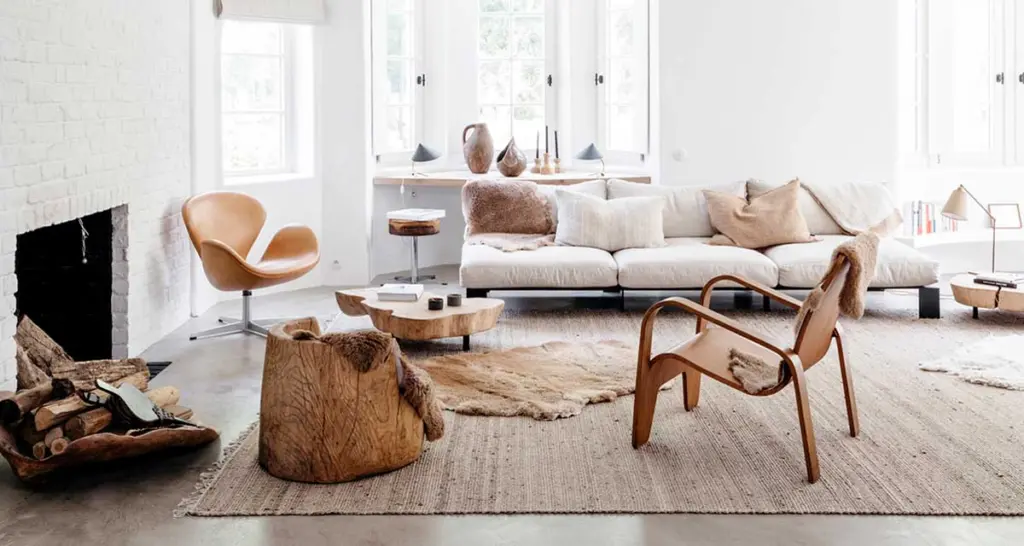
Embodying Impermanence:
- Mottainai Philosophy: Embrace the Mottainai philosophy, encouraging a mindful approach to objects and spaces by minimizing waste and repurposing items.
- Wabi Sabi Rituals: Incorporate Wabi Sabi rituals that reflect the impermanence of life, such as seasonal tea ceremonies or simple, contemplative moments.
- Flexible Arrangements: Adopt flexible furniture arrangements that allow for easy transitions and adjustments in response to changing seasons.
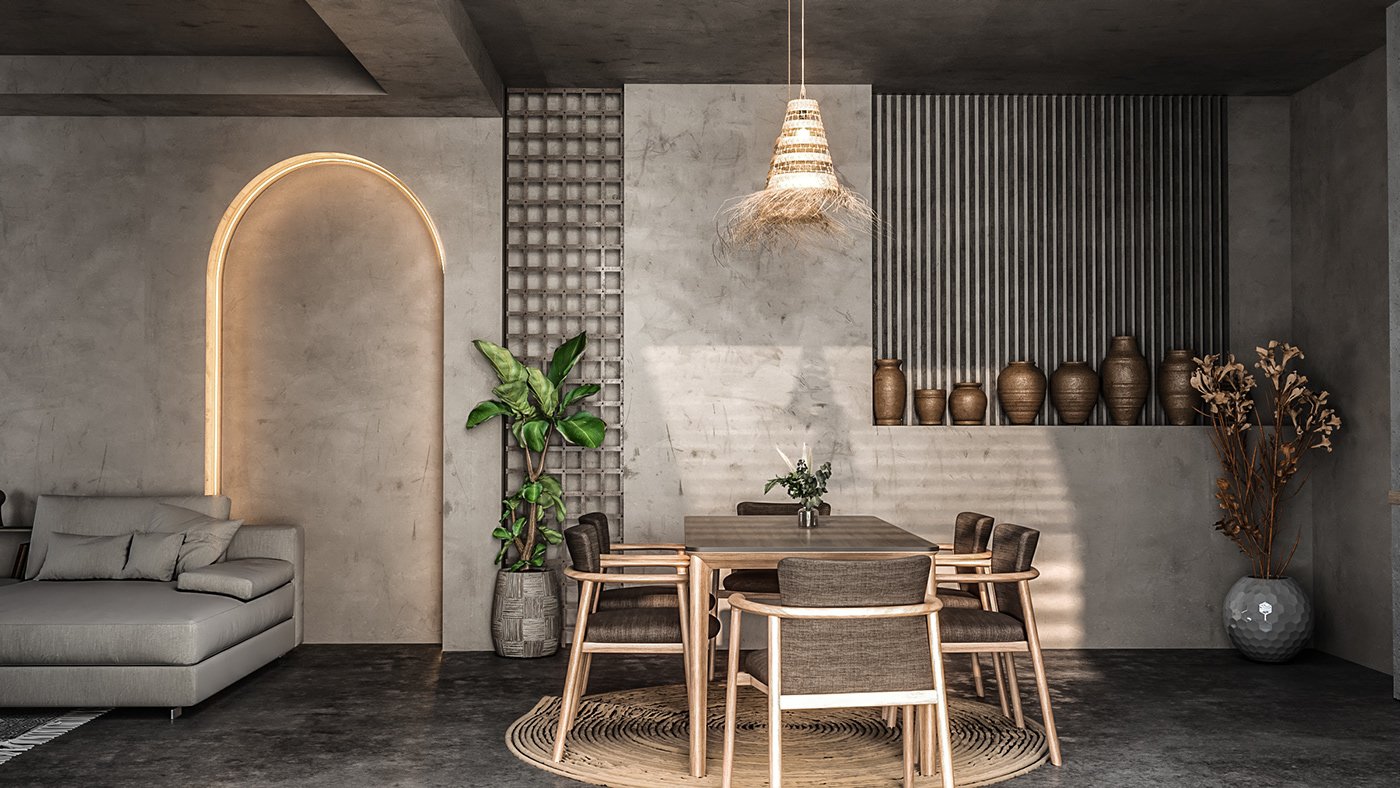
In a world obsessed with perfection, Wabi Sabi interior design offers a refreshing perspective. It’s about finding beauty in imperfection, embracing simplicity, and connecting with the authenticity of life. As you embark on your Wabi Sabi journey, remember that perfection is found in the imperfect, and true beauty lies in the genuine, unfiltered essence of your living spaces.
FAQs
What is the wabi-sabi philosophy of interior design?
Wabi-sabi is a Japanese philosophy celebrating imperfection, simplicity, and the beauty of natural materials. In interior design, it emphasizes a rustic, uncluttered, and organic aesthetic.
What are the rules for wabi-sabi interior design?
Wabi-sabi follows principles like embracing imperfection, valuing authenticity, incorporating natural elements, and focusing on simplicity. It encourages the use of handmade and weathered items.
Is wabi-sabi a design style?
Yes, wabi-sabi is considered a design style. It goes beyond aesthetics, reflecting a mindful way of living that appreciates the transient and imperfect nature of things.
What are the concepts of wabi-sabi?
Wabi-sabi concepts include simplicity, imperfection, austerity, nature, and acceptance of the passage of time. It values the beauty found in the natural and the aged.
What are the colors of wabi-sabi interior?
Wabi-sabi interiors often feature muted and earthy tones such as soft blues, greens, grays, and natural hues like clay and stone.
Who is the famous wabi-sabi interior designer?
interior designer Axel Vervoordt Known for embracing wabi-sabi aesthetics in interior design, promoting simplicity and imperfection.
